| Srl | Item |
| 1 |
ID:
154107
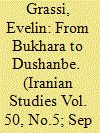

|
|
|
|
|
| Summary/Abstract |
This article offers an overview of Soviet Tajik Fiction under Stalinism (1920s–1950s) and during de-Stalinization (1950s–1970s) by contemplating the move from Bukhara to Dushanbe as a setting for Tajik stories and novels. In particular, it details the two main literary genres of the period, namely historical and psychological fiction. It argues that when tracing the main stages of evolution of Soviet Tajik fiction from the point of view of the setting one should mainly consider the works by Sadriddin Ayni, Jalol Ikromi and Fazliddin Muhammadiev.
|
|
|
|
|
|
|
|
|
|
|
|
|
|
|
|
| 2 |
ID:
065836
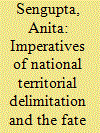

|
|
|
| 3 |
ID:
100392
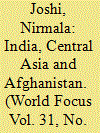

|
|
|
| 4 |
ID:
168992
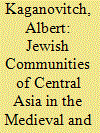

|
|
|
|
|
| Summary/Abstract |
When the Jews first settled in Central Asia is uncertain, but circumstantial evidence clearly indicates that this happened at least two and a half thousand years ago. In the first millennium AD, the Jews lived only in cities no farther than 750 km east of the Caspian sea (in the eighth–eleventh centuries the sea was called Khazarian). Only later did they migrate to the central part of the region, to cities like Samarkand and Bukhara. It is possible that Jews from Khazaria joined them, since they already had tight trade connections with Central Asia and China. There is no trace of evidence regarding the existence of Jews in the entirety of Central Asia in the early sixteenth century. At the very end of the sixteenth century Bukhara became the new ethnoreligious center of the Jews in that region. In the first half of the nineteenth century, thanks to European travelers visiting Central Asia at that time, the term “Bukharan Jews” was assigned to this sub-ethnic Jewish group. Drawing on a wide range of primary and secondary source materials, this article aims to prove that the presence of Jews in Central Asia was not continuous, and therefore the modern Bukharan Jews are not descendants of the first Jewish settlers there. It also attempts to determine where Central Asia’s first Jewish population disappeared to.
|
|
|
|
|
|
|
|
|
|
|
|
|
|
|
|
| 5 |
ID:
065835
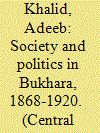

|
|
|
| 6 |
ID:
128546


|
|
|